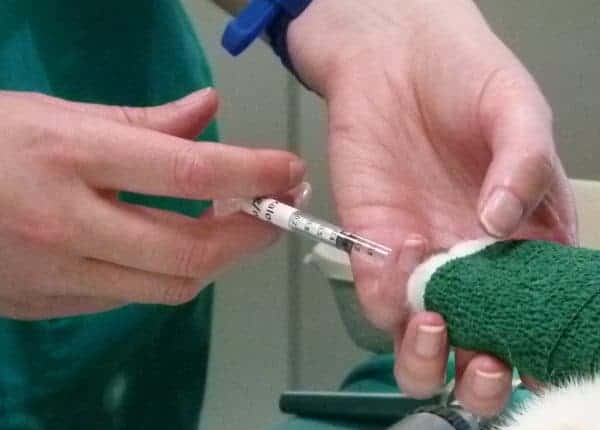Accessing a vein can be difficult at the best of times though, so we’ve brought together 10 top tips to ‘getting a vein’ in rabbits. Size matters – use a 24 gauge needle for blood sampling; a 24 or 26 gauge catheter for fluid therapy in small rabbits; and a 22 gauge catheter for anything over 3 or 4 kg

20th April 2017
Accessing a vein can be difficult at the best of times though, so we’ve brought together 10 top tips to ‘getting a vein’ in rabbits.
- Size matters - use a 24 gauge needle for blood sampling; a 24 or 26 gauge catheter for fluid therapy in small rabbits; and a 22 gauge catheter for anything over 3 or 4 kg
- Avoid clotting - rabbit blood tends to clot quickly so whilst it’s important to to draw blood out slowly to avoid haemolysis, always transfer a haematology sample into an EDTA tube as soon as you can
- Hep-flush - flush the needle or catheter with heparin first to reduce clotting, though it may be worth checking with your lab if this will interfere with any tests
- The 1% rule - don’t take more than 1% of the animals body weigh in blood at any one time. For a 1kg rabbit, this may be less than you think
- Help dilation - warm the skin over the vein to increase venous dilation
- Local analgesia - apply EMLA cream over the site at least 45 minutes before sampling. The local anaesthetic properties of the lignocaine and prilocaine will be effective through all the dermal layers and will last up to an hour
- Visualise the vein - shave the hair away from the skin to help make the vein more visible
- Keep them calm - avoid too much stress by wrapping the rabbit in a towel
- Which vein? - the jugular vein is the most popular vein for collecting a blood sample. The marginal ear vein is very popular for intravenous drips. The cephalic and saphenous veins are also useful peripheral veins
- Avoid the artery – it’s very important to avoid using the central ear artery, particularly when administering fluids, as any irritation or excessive bleeding from the site can cause occlusion and skin necrosis














